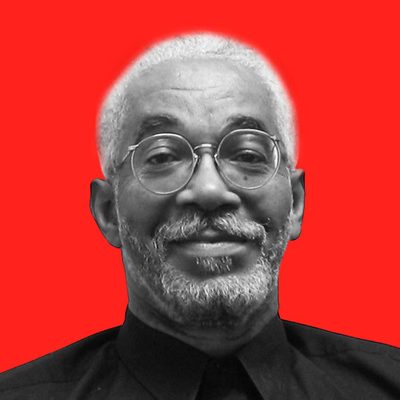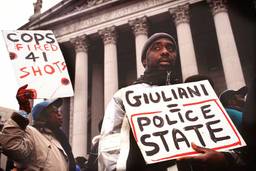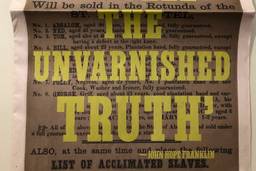Jena and the Post-Civil Rights Fallacy
Around the country, black males face a criminal justice system that incarcerates them more than eight times the rate of whites
Salim Muwakkil
Well, it appears that the post-civil rights era is old news. Put another way, the post is past.
This truth was revealed most recently in the huge protest surrounding the case of the Jena Six, in which six black high school students were victims of double-standard justice. Tales of their disparate treatment attracted at least 25,000 people from across the country on Sept. 20 to the tiny town of Jena, La., and prompted many activists to announce the emergence of a new civil rights movement.
The large, mutigenerational crowd was drawn by a convergence of factors, many of which were particular to the Jena Six case. Among them, the presence of three rope nooses (an incendiary symbol of racist violence), evidence of racial disparities in punishments for a school fight, and a powerful pro-Jena Six campaign pushed by black bloggers, black radio hosts and the black press.
But the Rev. Jesse Jackson, one of the protest’s many organizers, discerned the real impetus for this unprecedented gathering. “Jena,” he said, “is just a DNA sample of what’s happening around the country.”
Indeed. Around the country, black males face a criminal justice system that incarcerates them more than eight times the rate of whites. Most of America’s penal institutions are festering holding pens for black and Latino youth. Moreover, the communities from which these youth are siphoned suffer from the absence of their potential contributions.
Anguish about this seemingly interminable social gridlock is the probable cause for the big protest in little Jena.
Jackson not only unearthed the nugget of the Jena protest, the former presidential candidate also inserted that wisdom into the presidential race. During a speech at historically black Benedict College in South Carolina, Jackson chastised Sen. Barack Obama (D-Ill.) for “acting like a white candidate” in his tepid response to the case in Jena.
Although Jackson later softened his comments and reaffirmed his solid support for Obama, he put pressure on the candidate to speak more forcefully on the issue of biased prosecution. Besides, Jackson’s more subtle point is that “post-racial” black candidacies are difficult, at best, until this society redresses its racist legacy.
Meanwhile, the media has been awash in assessments of a new cohort of black leadership. These neophytes are generally described as well-educated (often Ivy Leaguers), non-ideological coalition builders – in that they were not nurtured in the race-tinged battleground of the civil rights movement.
The star players in this coterie are Obama, Massachusetts Gov. Deval Patrick, Newark Mayor Cory Booker, Washington, D.C. Mayor Adrian Fenty, former Tennessee Rep. Harold Ford, Alabama Rep. Artur Davis, Philadelphia mayoral candidate Michael Nutter and a few others.
These attractive newcomers are being cast as the harbingers of a new America, a nation untroubled by the ogre of rank racism. Race-focused leadership, like that expressed by the Revs. Al Sharpton and Jackson, are to be relegated to another era, a 20th century paradigm.
These ideas are part of a hardening notion that the protest mode is an ineffective way to redress the racial problems of the 21st century. Increasing numbers of commentators are stressing the need for African Americans to place more focus on internal social and moral reform than on external protests for civil rights. This is hardly a new debate. In fact, it was the core disagreement between W.E.B. Dubois and Booker T. Washington at the beginning of the 20th century.
The Jena protest revealed that the currency of civil rights remains high in the black community in 2007. And although the protest was remarkably decentralized, many of the young organizers eagerly sought the expertise of the Revs. Jackson and Sharpton and welcomed their participation.
Black America is under assault by a biased criminal justice system, and the Jena protest was a spasm of its collective consciousness. This system, correctly labeled “the prison-industrial complex,” is the primary site of racial oppression today, and one of its most corrosive aspects is what many activists call the “school-to-jail pipeline.”
The Jena Six case revealed that pipeline in all its perverse glory: white students’ punishment for hanging nooses remained within the context of school discipline, while the black students’ cases were exported to the criminal justice system. Protesting this disparity is exactly the role of the civil rights community.
Obama is a black politician seeking national consensus. If he responded to every expression of racial bias, he would alienate his supporters who believe we live in post-civil rights America. However, some African Americans are uncomfortable that Obama’s prospects for success are enhanced by a state of racial denial.

I hope you found this article important. Before you leave, I want to ask you to consider supporting our work with a donation. In These Times needs readers like you to help sustain our mission. We don’t depend on—or want—corporate advertising or deep-pocketed billionaires to fund our journalism. We’re supported by you, the reader, so we can focus on covering the issues that matter most to the progressive movement without fear or compromise.
Our work isn’t hidden behind a paywall because of people like you who support our journalism. We want to keep it that way. If you value the work we do and the movements we cover, please consider donating to In These Times.
Salim Muwakkil is a senior editor of In These Times and host of “The Salim Muwakkil Show” on radio station WVON-AM in Chicago. Muwakkil was also contributing columnist for both the Chicago Sun-Times (1993 – 1997) and the Chicago Tribune (1998 – 2005). He is also a co-founder of Pacifica News’ network daily “Democracy Now” program and served as an adjunct professor at Northwestern University, University of Illinois, the Art Institute of Chicago and Chicago’s Columbia College.








